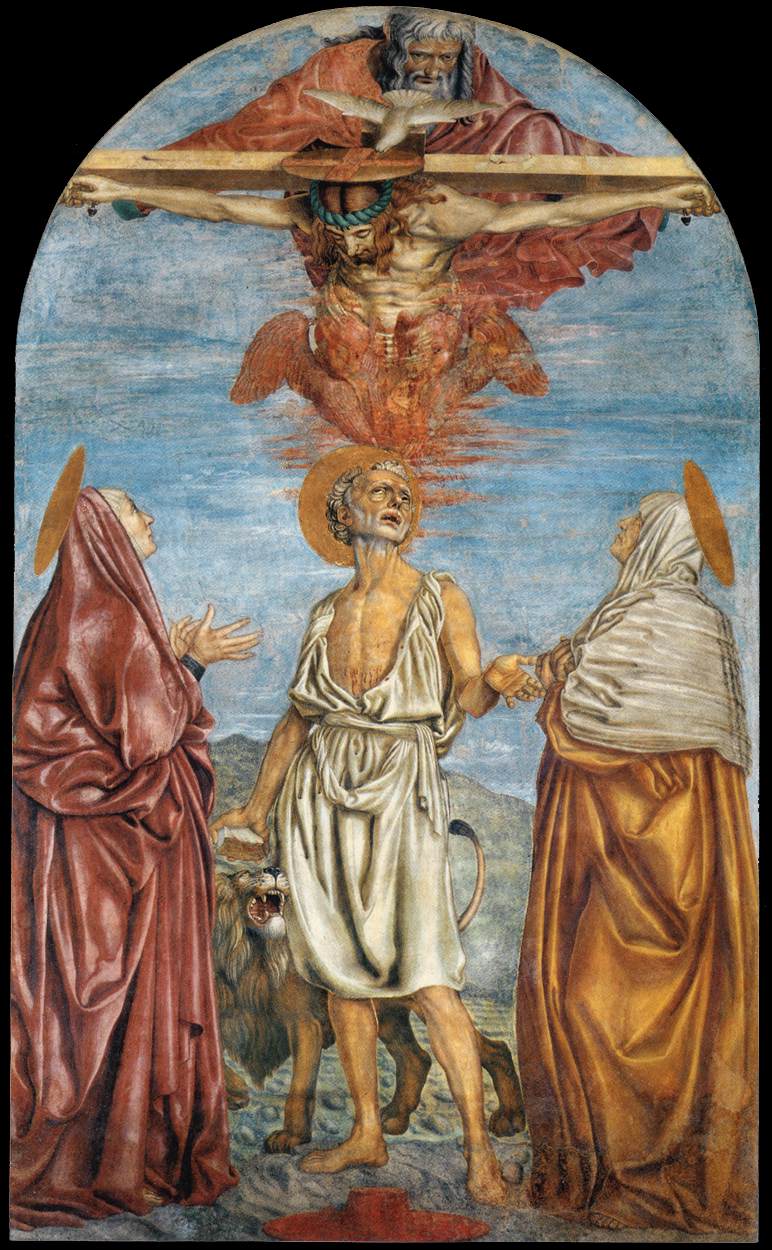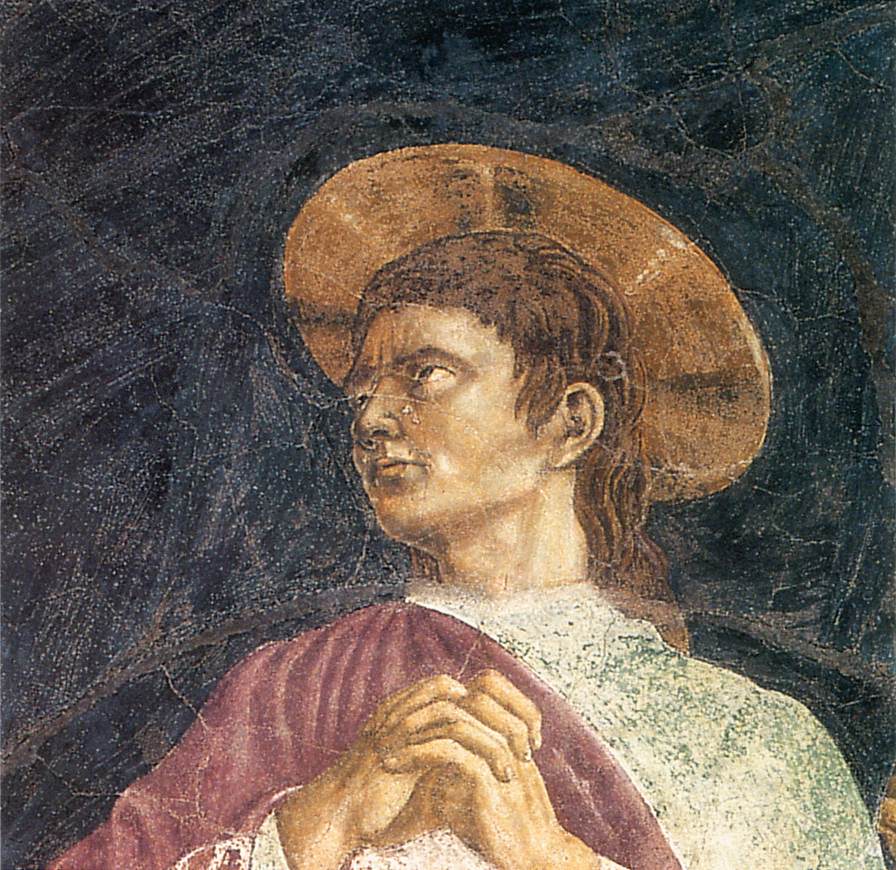By Anne Leader and Amy Fredrickson
Florentine painter Andrea di Bartolo di Simone, known as Andrea del Castagno, died suddenly 19 August 1457. Recognized as one of the most influential mid-century Florentine Renaissance artists, Castagno is appreciated for his naturalism and command of the human figure.
In Lives, Vasari provides some insight into his enigmatic beginnings. Vasari estimated that Andrea was born around 1390; however, recently, scholars believe a date around 1419 is plausible. Andrea was born near Florence, in Mugello, now called Castagno d’Andrea. According to Vasari, Andrea, a farmer’s son, was discovered drawing animals on slabs of stone while working as a shepherd — a favorite classical trope used frequently by the author, as in the life of Giotto (d. 1337), when an artist’s education remained obscure.
Andrea worked frequently in fresco for ecclesiastical, civic, and private patrons as seen in his Last Supper of 1447 for the Benedictine convent of Sant’Apollonia, his series of famous men and women painted in the villa of Filippo Carducci around the same time, his Trinity Appearing to Sts. Jerome, Paula, and Eustochium for the Corboli Chapel in S. Annunziata made after 1453, or his faux tomb monument to Niccolò da Tolentino on the wall of the Florentine Duomo from 1455-6. Though Andrea was highly influential and sought-after in his lifetime, by Vasari’s day he was seen as rather rough and crude in comparison to his contemporary, Domenico Veneziano. Vasari claimed that Andrea murdered Domenico out of envy, but documents prove that Andrea predeceased him by four years.
Scholars considered Andrea as one of the most influential fifteenth-century artists. He developed a painterly style which provided a realistic, three-dimensional interpretation of the human body, a method he executed through careful contouring and modeling. He is credited with furthering the concept of Florentine disegno. He is the first artist whose workshop documents show a departure from the sinopia method of applying drawings to the wall and then covering them in plaster. Some of Andrea’s figures show punch marks along the forms, which proves that Andrea used cartoons; the outlines were then transferred to the plaster and dusted to enhance the lines and visibility. The cartoon method yielded more accurate workshop productions, and future painters employed this method for its efficiency.
The disegno effect is visible in Andrea’s frescos in the Duomo, Sant’Apollonia, and Santissima Annunziata in Florence. He was a member of the Arte dei Medici e Special, and his capabilities influenced the subsequent painters such as Andrea del Verrocchio and Andrea Mantegna. In Lives, Vasari was impressed by Andrea’s mastery of disegno; however, he critically stated that his choice of colors were not harmonious. Vasari reinforced a tale that Andrea killed contemporary painter Domenico Veneziano (1410-1461). The artists painted frescos for Sant’Egidio in Florence between 1439-1445.
During the nineteenth-century, Italian scholar Gaetano Milanesi (1813-1895) disproved this theory when archival documents surfaced proving that Domenico outlived Andrea by four years. These accusations tarnished Andrea’s reputation, and resulted in negative interpretations of his work. It was not until the twentieth-century that Andrea’s status improved when scholars valued and appreciated his paintings for the naturalistic effect and mastery of disegno.
References
Hellmut Wohl. “Castagno, Andrea del.” Grove Art Online. Oxford Art Online. Oxford University Press, accessed 16 August, 2017.
Smith, Marilyn. “Castagno, Andrea del.” The Oxford Companion to Western Art. Oxford Art Online. Oxford University Press, accessed August 16, 2017,
Spencer, John R., Andrea del Castagno and his patrons. (Durham: Duke University Press, 1991).
Further Reading:
Boskovits, Miklós, and David Alan Brown, et al. Italian Paintings of the Fifteenth Century. The Systematic Catalogue of the National Gallery of Art, (Washington, D.C., 2003).
Fortuna, Alberto, Andrea del Castagno (Florence, 1957).
Horster, Maria, Andrea del Castagno ( Oxford, 1980).
Monument to Niccolò da Tolentino, 1456, fresco, Duomo, Florence
St Julian and the Redeemer, c. 1453, fresco, Santissima Annunziata, Florence
The Holy Trinity, St Jerome and Two Saints, c. 1453, fresco, Santissima Annunziata, Florence
Crucifixion, c. 1455, fresco, Sant’Apollonia, Florence
Crucifixion (detail), c. 1455, fresco, Sant’Apollonia, Florence
Portrait of a Gentleman, 1450-57, tempera on panel, National Gallery of Art, Washington D.C.
David with the Head of Goliath, c. 1450-1455, tempera on leather on wood, National Gallery of Art, Washington D.C.







